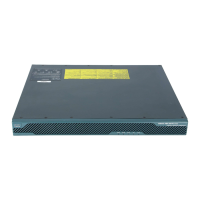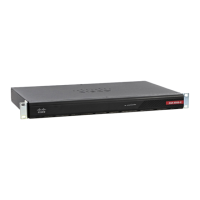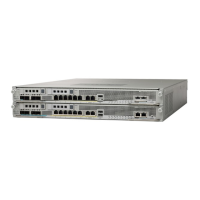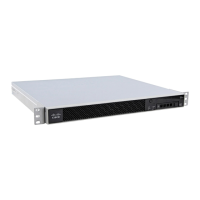13-36
Cisco ASA Series Firewall CLI Configuration Guide
Chapter 13 Inspection of Basic Internet Protocols
IPv6 Inspection
In the default global policy, the inspection_default class map is a special class map that includes default
ports for all inspection types (match default-inspection-traffic). If you are using this class map in
either the default policy or for a new service policy, you can skip this step.
For information on matching statements, see Identify Traffic (Layer 3/4 Class Maps), page 11-13.
Step 2 Add or edit a policy map that sets the actions to take with the class map traffic.
policy-map name
Example:
hostname(config)# policy-map global_policy
In the default configuration, the global_policy policy map is assigned globally to all interfaces. If you
want to edit the global_policy, enter global_policy as the policy name.
Step 3 Identify the L3/L4 class map you are using for IPv6 inspection.
class name
Example:
hostname(config-pmap)# class inspection_default
To edit the default policy, or to use the special inspection_default class map in a new policy, specify
inspection_default for the name. Otherwise, you are specifying the class you created earlier in this
procedure.
Step 4 Configure IPv6 inspection.
inspect ipv6 [ipv6_policy_map]
Where ipv6_policy_map is the optional IPv6 inspection policy map. You need a map only if you want
non-default inspection processing. For information on creating the inspection policy map, see Configure
an IPv6 Inspection Policy Map, page 13-34.
Example:
hostname(config-class)# no inspect ipv6
hostname(config-class)# inspect ipv6 ipv6-map
Note If you are editing the default global policy (or any in-use policy) to use a different IPv6
inspection policy map, you must remove the IPv6 inspection with the no inspect ipv6 command,
and then re-add it with the new IPv6 inspection policy map name.
Step 5 If you are editing an existing service policy (such as the default global policy called global_policy), you
are done. Otherwise, activate the policy map on one or more interfaces.
service-policy policymap_name {global | interface interface_name}
Example:
hostname(config)# service-policy global_policy global
The global keyword applies the policy map to all interfaces, and interface applies the policy to one
interface. Only one global policy is allowed. You can override the global policy on an interface by
applying a service policy to that interface. You can only apply one policy map to each interface.
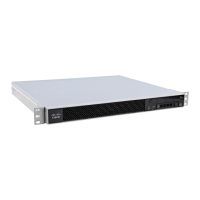
